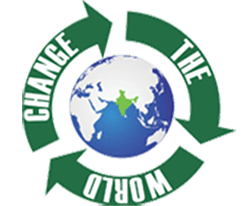When we just cannot keep depending on depleting fossil fuel resources with their ever increasing cost and also expect a strong economy. The modern economies as they grow depend increasingly on the integration of energy supply. Everything, from the car that we use for work to the stove that we use to cook dinner depend on fossil fuel based energy resource. Unfortunately, the fossil fuels can never be infinite in their availability and we already see that the supply is dwindling. This in turn is driving cost sky high and is putting a strain on the large Indian middle class and as a result the whole Indian economy. On the plus side, this has generated a great deal of interest in solar, wind and other renewable resources all of which are now cost effective and reduce our dependence on fossil fuels. So why not harness the power of the gods which are endless and free! Namely solar and wind energy. India has a climate which favorably supports the use of such renewable resource. We can never stop a natural disaster from happening but we can resist the man-made disasters of global warming from having any adverse affect on the future of mankind and our earth. We can effectively do this by taking small but effective steps towards a green tomorrow.Change the world
 "Change the World" is another unique Initiative of The Green India Initiative Foundation, which is a model making competition out of solid waste material. This competition is undertaken by TGIIF every year for school and college student. The main motto of this competition is to spread a message about "Best from Waste" amongst the youth and future of the nation.
"Change the World" is another unique Initiative of The Green India Initiative Foundation, which is a model making competition out of solid waste material. This competition is undertaken by TGIIF every year for school and college student. The main motto of this competition is to spread a message about "Best from Waste" amongst the youth and future of the nation.
The Green I Initiative Foundation intend to achieve through this "Green Schools Initiative" that students of beneficiary school can learn sustainability by living it every day at school, so that when they leave school; these ideas will have become a part of the way they think and approach life. They will take these ideas home and into the workplace when they graduate.
The Green Schools initiative, aims to achieve the following outcomes:
Ecological Literacy:To develop, in each student, a comprehensive understanding of the basic patterns and processes by which nature sustains life and how these core ecological concepts relate to sustainable human communities.
Learning It by Living It:This is a pilot project, can be applied to create sustainable human communities.
Environmental Ethic:To develop an environmental ethic in all members of the TGII community.
Contributing to Society: To fulfill the basic need of the school through research, publications and outreach in the areas of outdoor and environmental education, environmental monitoring, and sustainability.

 "Change the World" is another unique Initiative of The Green India Initiative Foundation, which is a model making competition out of solid waste material. This competition is undertaken by TGIIF every year for school and college student. The main motto of this competition is to spread a message about "Best from Waste" amongst the youth and future of the nation.
"Change the World" is another unique Initiative of The Green India Initiative Foundation, which is a model making competition out of solid waste material. This competition is undertaken by TGIIF every year for school and college student. The main motto of this competition is to spread a message about "Best from Waste" amongst the youth and future of the nation.




